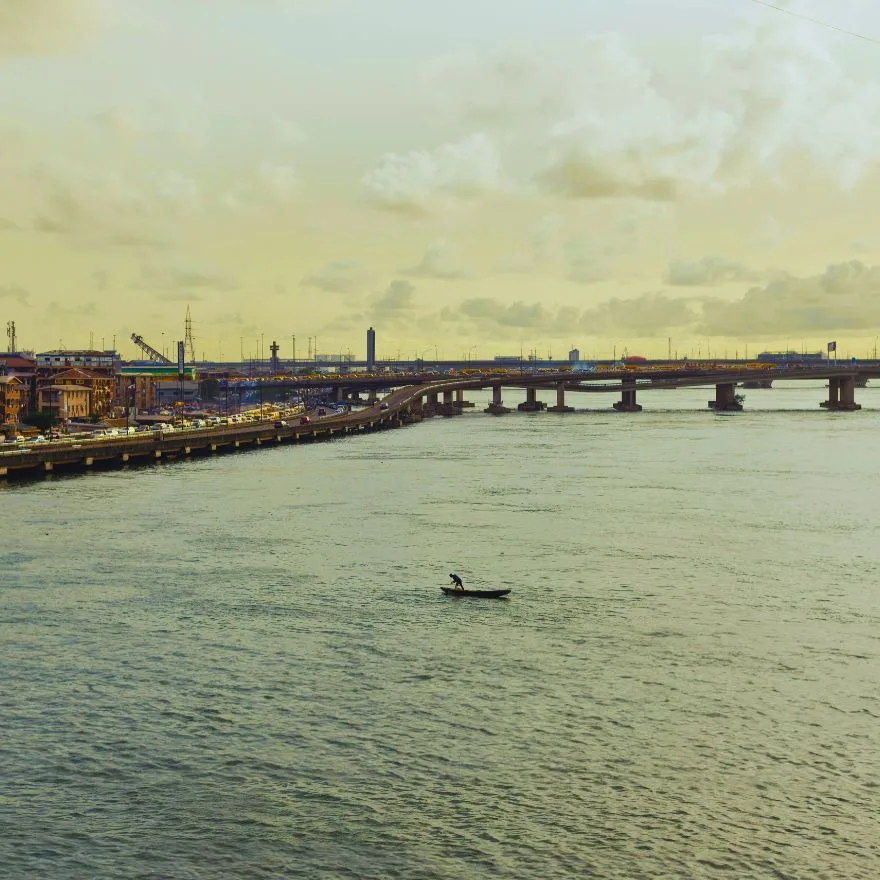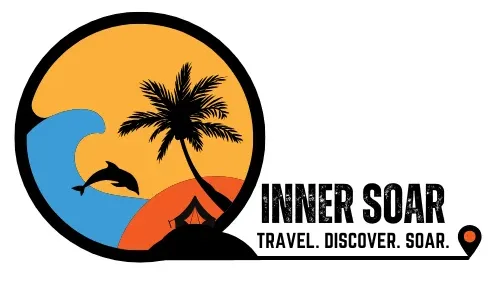
Embracing the Vibrant Pulse of West Africa
There is a certain magic that happens when you first step foot onto Lagos soil. The air, thick with possibility, carries whispers of ancient stories alongside the rhythmic beats of Afrobeats pulsing through bustling streets. Lagos—Nigeria’s coastal crown jewel—doesn’t simply welcome visitors; it embraces them in a whirlwind dance of contrasts, inviting souls to awaken to new dimensions of experience. As I embarked on my journey through this magnificent metropolis, I discovered that Lagos isn’t merely a destination—it’s a transformation waiting to unfold within the traveler who arrives with an open heart.
The Soul-Stirring Symphony of Lagos
Lagos doesn’t reveal itself to the casual observer. Like any profound relationship, it requires presence, patience, and the willingness to look beyond first impressions. The city moves to its own rhythm—sometimes frenetic and overwhelming, other times surprisingly gentle and introspective. The symphony of car horns, market chatter, and prayer calls creates an urban soundtrack unlike any other, a constant reminder that you’re experiencing a place where humanity expresses itself in its most raw and authentic form.
For those seeking to elevate their consciousness through travel, Lagos offers a masterclass in resilience, creativity, and joy that flourishes even amidst challenges. This is a city where the human spirit soars despite constraints—where innovation isn’t a buzzword but a daily necessity, and where community bonds form the invisible architecture holding everything together.
Hidden Wonders of Lagos: Five Gems That Define Its Essence
1. Makoko Floating Village
Venture beyond the glossy narratives of Lagos and you’ll discover Makoko—a floating village where homes perch on stilts above the Lagos Lagoon. Here, wooden canoes serve as the primary mode of transportation, gliding silently through narrow water channels that function as streets. Often mischaracterized as simply an impoverished area, Makoko reveals itself to the mindful visitor as a testament to human adaptability and community resilience.
As you navigate the waterways with a local guide (always arrange this ethically through community tourism initiatives), you’ll witness a self-contained ecosystem where fishermen cast nets in early morning light, children attend the floating school—an architectural marvel designed by Nigerian architect Kunlé Adeyemi—and women smoke fish to sell in mainland markets. The village offers profound lessons in sustainable living and communal interdependence that many modern societies have forgotten.
2. New Afrika Shrine
To understand Lagos’s beating heart, one must experience the New Afrika Shrine in Ikeja. Created by Femi Kuti to honor his father Fela Kuti—the revolutionary musician who pioneered Afrobeat—this cultural sanctuary transcends the typical concert venue. Here, music becomes meditation, dance transforms into spiritual practice, and political consciousness merges with artistic expression.
On performance nights, the air vibrates with saxophone riffs and polyrhythmic percussion as bodies move in collective celebration. Between sets, elders share stories of Nigeria’s struggle against colonialism and ongoing quest for true democracy. The Shrine isn’t merely entertainment; it’s a portal into understanding Nigeria’s complicated history and vibrant cultural resistance. Come with respect, leave your preconceptions at the door, and allow yourself to be transformed by the experience.
3. Terra Kulture
For those seeking to deepen their understanding of Nigerian artistic traditions and contemporary expressions, Terra Kulture on Victoria Island offers a sanctuary of cultural immersion. This arts and culture center houses a well-curated gallery featuring works by Nigeria’s most compelling visual artists—from established masters to emerging talents challenging conventions.
The complex also includes a magnificent theater where you can experience Nigerian plays in English or local languages (with translation available). Sunday afternoons often feature traditional dance performances that trace movement practices from various Nigerian ethnic groups. Before leaving, browse the extensive bookstore specializing in African literature, history, and philosophy—perfect for continuing your inner journey long after your physical one concludes.
4. Lekki Conservation Centre
When the city’s intensity calls for balance, seek refuge at the Lekki Conservation Centre—a 78-hectare urban forest preserving coastal ecosystems just minutes from Victoria Island’s skyscrapers. The elevated 1.8-kilometer canopy walkway—one of Africa’s longest—allows visitors to float above the forest floor, observing monkeys swinging through branches and birds performing aerial ballets between trees.
Early mornings reveal magical light filtering through the mangrove forest, creating moments of transcendent connection with nature. Silent meditation on one of the hidden benches becomes especially powerful when you realize this protected space exists in creative tension with Lagos’s explosive urban development—a reminder of the delicate balance between progress and preservation that all societies must navigate.
5. Nike Art Gallery
Ascending the five floors of Nike Art Gallery in Lekki feels like climbing a mountain of creative consciousness. Housed in a striking white building adorned with colorful sculptures, this gallery contains over 8,000 artworks from across Nigeria, representing the country’s diverse cultural expressions and artistic traditions.
The gallery’s founder, Nike Davies-Okundaye, has dedicated her life to preserving traditional textile arts like adire (indigo-dyed cloth) while simultaneously nurturing contemporary artistic voices. Beyond viewing the extensive collection, visitors can participate in workshops to learn traditional weaving, beadwork, or batik techniques—transforming your visit from passive appreciation to active engagement with living heritage.
The gallery frequently hosts cultural performances in its courtyard, where generations come together in celebration of Nigeria’s artistic continuity. Before departing, many visitors feel compelled to leave messages on the gallery’s signature wall—adding their voices to the collective story of transformation that this space inspires.
Nourishment for Body and Soul: Lagos’s Culinary Gifts
In Lagos, food transcends mere sustenance; it becomes a portal through which you can access memories, traditions, and communal histories spanning centuries. Each bite contains stories of cultural exchange, adaptation, and the ingenious ways Nigerian peoples have transformed local ingredients into sublime expressions of identity.
Begin your culinary pilgrimage with jollof rice—that glorious, tomato-infused grain that incites passionate debates across West Africa about whose version reigns supreme. Nigerian jollof, typically prepared with long-grain rice, scotch bonnet peppers, and a complex blend of spices, offers a smoky depth that distinguishes it from its regional cousins. Try it alongside dodo (fried plantains)—the sweet counterpoint to jollof’s savory complexity.
For breakfast, embrace akara (black-eyed pea fritters) and ogi (fermented corn porridge). The contrast between crispy exterior and fluffy interior of freshly fried akara alongside the subtle tanginess of ogi creates a morning ritual that grounds you in local rhythms. The women who prepare these foods on street corners often rise before dawn to soak, grind, and ferment ingredients—their dedication a testament to culinary traditions passed through generations.
No Lagos experience is complete without sampling suya—thinly sliced beef rubbed with ground peanuts and spices before being grilled over open flames. The best suya appears after sunset when specialized vendors (malam) set up their grills. The ritual of selecting your meat, watching it cook, then having it wrapped in newspaper with raw onions and additional yaji spice creates anticipation that makes the first bite transcendent.
For the adventurous soul-seeker, efo riro (vegetable soup with assorted meats) offers a gateway into understanding Nigerian flavor complexity. This spinach-based stew incorporates locust beans, crayfish, palm oil, and various proteins in a symphony of tastes that reveals how Nigerian cuisine masterfully balances earth, sea, spice, and fermentation. Eat it traditionally—with fufu or pounded yam—using your right hand to tear off pieces of the starchy base and dip into the rich sauce.
Echoes of the Past: Unveiling Lagos’s Timeless Tale
As you move through Lagos, listen closely for the whispers of history embedded in its streets and structures. Before becoming Nigeria’s commercial epicenter, Lagos Island (Eko, as locals call it) was home to the Awori people, a Yoruba subgroup. The city’s name derives from the Portuguese “Lagos” (lakes), bestowed in the 15th century when explorers first encountered the lagoon systems surrounding the area.
By the 1800s, Lagos had become a significant port in the transatlantic slave trade—a painful chapter commemorated at Freedom Park, transformed from colonial-era prison grounds into a memorial space honoring those who suffered and resisted. The Brazillian Quarter reveals another layer of this complex history, where returned formerly enslaved people created distinctive architecture blending Brazilian colonial styles with Yoruba elements—buildings that still stand as testaments to cultural resilience and adaptation.
Lagos served as Nigeria’s capital from independence in 1960 until 1991, witnessing pivotal moments in the nation’s evolution. The National Museum houses artifacts that trace human presence in the region back thousands of years, including the magnificent Benin Bronzes that speak to sophisticated artistic traditions predating European contact. Nearby, the Kalakuta Republic Museum preserves Fela Kuti’s home and recording studio—ground zero for musical revolution that challenged political corruption and neocolonial exploitation.
Each historical layer of Lagos reminds us that places, like people, contain multitudes—their stories never simple or singular but rich with complexity, contradiction, and continuous becoming.
When to Answer Lagos’s Call
The ideal moment for your Lagos pilgrimage falls between November and March—the dry season when humidity softens and rainfall becomes sparse. December brings particular magic during the Festive period when Lagosians return from across the diaspora. The city adorns itself in lights, outdoor gatherings multiply, and cultural events reach their zenith. The Lagos Street Party and Calabar Carnival infuse December with spectacular energy, though accommodations require advance planning during this peak period.
Avoid the heaviest rains between June and August when storms can transform streets into temporary waterways and disrupt travel plans. April’s Harmattan winds occasionally blow Saharan dust across the city, creating hazy conditions that affect visibility and air quality.
Riddle of the Roads: Insights for Lagos Explorers
Lagos rewards the prepared traveler who approaches with both structure and flexibility. Secure accommodations on Lagos Island, Victoria Island, or Ikeja for optimal positioning between cultural sites and business districts. The continental breakfast at boutique hotels provides sufficient morning nourishment before venturing into the city’s culinary landscape.
Transportation requires strategic thinking—Lagos traffic has inspired its own vocabulary of frustration. Download ride-hailing apps like Uber or Bolt for air-conditioned journeys with predetermined pricing, but embrace okadas (motorcycle taxis) and danfos (minibuses) at least once for an authentic local experience. Consider hiring a driver for full-day excursions to maximize your time and minimize navigation stress.
Dress modestly but expressively—Lagos appreciates color and style while respecting traditional values. Carry minimal cash and keep valuable documents secured in hotel safes. Purchase a local SIM card immediately upon arrival for reliable data access; Google Maps becomes an essential spiritual companion for navigating the labyrinthine city.
Most importantly, cultivate relationships. Lagos operates through personal connections—the security guard who recommends his cousin’s restaurant, the gallery attendant who invites you to her sister’s traditional wedding, the taxi driver who knows which unmarked building houses the best jazz club. Each interaction offers potential doorways into authentic experiences that no guidebook can provide.
The Return Journey: Lagos Travels With You
As your time in Lagos concludes, you’ll notice something unexpected—the city has inscribed itself upon your consciousness in ways that transcend mere memory. The persistent rhythm of Lagos continues beating within you long after departure, a perpetual invitation to return not just physically but through the ongoing integration of its lessons.
For Lagos teaches us that beauty and challenge coexist not as opposites but as necessary companions in the authentic human experience. It demonstrates how joy can be revolutionary in difficult circumstances and how strangers become family through small acts of connection. Most profoundly, Lagos reveals how a place shaped by colonization, exploitation, and struggle can simultaneously generate some of humanity’s most vibrant cultural expressions and resilient community structures.
This paradoxical wisdom becomes part of your inner landscape—a resource to draw upon when facing your own life’s complexities. In this way, Lagos continues nourishing your inner soaring long after your footprints have faded from its shores, proving once again that the most meaningful journeys always lead both outward and inward, transforming not just our perspective of the world but our understanding of ourselves within it.
This piece is part of the Inner Soar travel series, where we explore destinations not merely as places to visit but as teachers offering wisdom for our ongoing journey of consciousness and growth.
